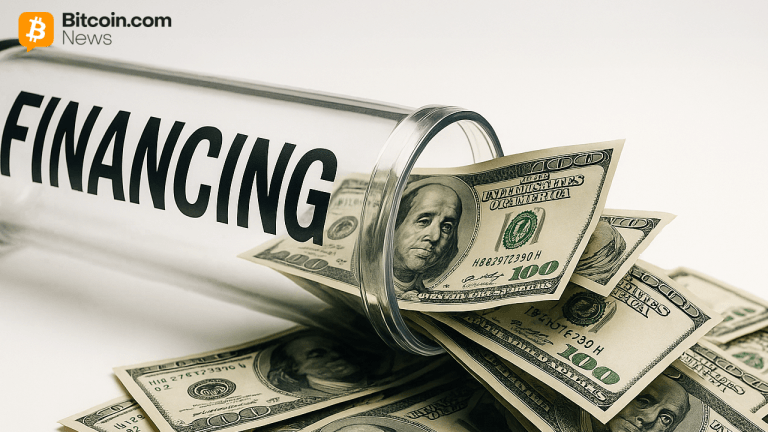Munis underperform UST rally post-CPI
7 min read
Municipals were firmer Thursday, underperforming a U.S. Treasury rally after inflation data showed Federal Reserve rate cuts are on track for later this year, with the September Federal Open Market Committee meeting the likely start to an easing cycle. Equities ended mixed.
Muni yields fell two to eight basis points, depending on the curve, while UST yields up to 12 basis points on the short-end.
“Bond yields are plunging [Thursday] as rate cut expectations soar following this morning’s consumer price index release, which depicted the first month of deflation since July 2022,” noted José Torres, senior economist at Interactive Brokers. “Market participants have dialed up the odds of the Federal Reserve dishing out its first reduction of the cycle to 85% in September. Furthermore, investors are expecting one to two more 25-bp fed fund trims before yearend.”
Scott Anderson, chief U.S. economist and managing director at BMO Economics, agreed. “Financial markets are celebrating in the wake of the release.”
“The Fed funds futures market is solidifying around a September rate cut in the wake of this morning’s report with around a 91% chance of a 25-basis point cut by then,” Anderson said.
The data “opens the door wide open for a September rate cut,” and “makes a very convincing case that consumer inflation has swiftly resumed its downward path after an unanticipated surge in the first quarter and is likely well on its way to a sustainable 2.0%,” he said.
The two-year muni-to-Treasury ratio Thursday was at 65%, the three-year at 67%, the five-year at 68%, the 10-year at 67% and the 30-year at 83%, according to Refinitiv Municipal Market Data’s 3 p.m. EST read. ICE Data Services had the two-year at 64%, the three-year at 65%, the five-year at 66%, the 10-year at 66% and the 30-year at 82% at 3:30 p.m.
Municipal bond mutual funds saw inflows as investors added $774.7 million from funds after $344.8 million of inflows the week prior, according to LSEG Lipper. Inflows were led by long-term funds.
High-yield continued to show strength, with inflows of $275.9 million after $215.6 million of inflows the previous week.
The end of June was a somewhat “slow period” as market participants waited for principal and income to come due July 1, said Jeff Timlin, a partner at Sage Advisory.
That, he said, coincided with the Fourth of July holiday.
However, the market picked up steam this week as volume rose to $9-plus billion, including a -high weekly issuance figure for the competitive calendar.
The summer months of June, July and August are heavy periods of issuance, but issuance can be choppy week-to-week, Timlin said.
The holiday-shortened week, during which issuance was virtually non-existent, created a slight backlog, as issuers, bankers, and investors were not as focused on the market.
However, “things eventually have to get done,” he said.
While the summer months are strong, Timlin said this year seems a bit more “muted.”
Despite this, the general backdrop supports the muni market.
There’s still a lot of cash sitting on the sidelines, as market participants may be reluctant to deploy capital, Timlin said.
For one, the relative value of munis is not “awfully attractive” compared to alternatives, and secondly, the muni yield curve remains inverted inside 10 years.
Additionally, there is uncertainty over when the Fed will end its tightening cycle and how rapidly that cycle will be, and some investors in the muni space do not like market volatility.
In the primary market Thursday, Ramirez priced for Houston (Aa3/AA//) a
The second tranche, $122.53 million of public improvement refunding bonds, Series 2024B, saw 5s of 3/2025 at 3.21%, 5s of 2029 at 3.03%, 5s of 2034 at 3.17%, 5s of 2039 at 3.46% and 5s of 2044 at 3.80%, callable 3/1/2034.
AAA scales
Refinitiv MMD’s scale was bumped five to six basis points: The one-year was at 2.94% (-6) and 2.92% (-6) in two years. The five-year was at 2.81% (-5), the 10-year at 2.80% (-5) and the 30-year at 3.68% (-5) at 3 p.m.
The ICE AAA yield curve was bumped two to six basis points: 3.03% (-4) in 2025 and 2.98% (-4) in 2026. The five-year was at 2.80% (-6), the 10-year was at 2.79% (-5) and the 30-year was at 3.66% (-2) at 3:30 p.m.
The S&P Global Market Intelligence municipal curve was bumped five basis points: The one-year was at 3.00% (-5) in 2025 and 2.96% (-5) in 2026. The five-year was at 2.81% (-5), the 10-year was at 2.80% (-5) and the 30-year yield was at 3.65% (-5) at 3 p.m.
Bloomberg BVAL bumped four to eight basis points: 3.01% (-8) in 2025 and 2.95% (-7) in 2026. The five-year at 2.81% (-7), the 10-year at 2.80% (-6) and the 30-year at 3.69% (-4) at 3:30 p.m.
Treasuries rallied.
The two-year UST was yielding 4.508% (-11), the three-year was at 4.270% (-12), the five-year at 4.128% (-11), the 10-year at 4.196% (-8), the 20-year at 4.503% (-7) and the 30-year at 4.405% (-7) at 3:30 p.m.
CPI
Inflation cooled in June, making the case for the Fed to start cutting rates in the next several months.
The CPI data “strengthens the case for a September rate cut,” said Gary Schlossberg, a market strategist at Wells Fargo Investment Institute. “Fed Chairman [Jerome] Powell in Congressional testimony earlier this week laid the groundwork for a policy stance driven more by inflation’s trajectory by noting that softening labor-market conditions effectively are tilting the balance of risks from unchanged policy away from inflation to a recession.”
This should boost bonds because “curve-steepening trades as prospects for rate declines led by short-term investments encourage a rotation by investors into longer-dated securities (both for increasingly attractive yields and because of their greater price-sensitivity to falling interest rates),” Schlossberg said.
Calling the report “arguably the most encouraging one the FOMC has received since it began its inflation fight nearly two and a half years ago,” Wells Fargo Securities senior economists Sarah House and Michael Pugliese said a July 31 rate cut “is unlikely, but we remain of the view that the FOMC will cut the federal funds rate by 25 bps at its September meeting and reduce the fed funds rate by another 25 bps in December.”
The Fed has an “all clear sign to start lowering rates later this year,” said John Kerschner, head of U.S. securitized products at Janus Henderson Investors. But with the next FOMC meeting just weeks away, he said, “the market is currently pricing in that the Federal Reserve will skip that meeting and make their first cut in September.”
Perhaps of greater importance, Kerschner said, is that “the market is now expecting three cuts by the end of January 2025.”
The latest Fedspeak suggests the committee sees “the labor market is in better balance” and wants more confidence inflation is reliable heading toward its 2% target, noted Josh Jamner, investment strategy analyst at ClearBridge Investments. “Today’s print combined with the May inflation data should help put committee members minds at ease.”
The three-month annualized core inflation rate at 2.1% should give “all the cover needed for the Fed to cut rates,” said Bryce Doty, vice president and senior portfolio manager at Sit Investment Associates. He expects “a half point cut in December, but we now think there is a decent chance for a September cut.”
“This report sits firmly within the boundaries of an inflation path that is moving sustainably down to 2%,” noted Olu Sonola, Fitch Ratings head of U.S. economic research. “This is another good report all around and it will be embraced whole-heartedly by the Fed. Sufficient confidence to begin cutting interest rates is getting closer, but the Fed will likely want to see similar prints in August and September before pulling the trigger on that first rate cut.”
“With the backdrop of the rise in the unemployment rate, policymakers itching for a reason to cut rates will find some evidence here,” said Jeffrey Cleveland, chief economist at Payden & Rygel, noting that a September rate cut is likelier than a July one.
Should there be a soft-landing, he said, “there’s still a limited downside for Treasury yields over the next year (big rallies in Treasuries would occur if growth does indeed slump, not in a soft landing).”
Brian Rose, senior U.S. economist at UBS Global Wealth Management, expects the Fed to use its July meeting “to signal that they are prepared to cut at the September meeting as long as the data continues on its recent trend.”
He sees a soft landing, with “the Fed cutting once per quarter.”
But, Rose noted, “the Fed would likely cut rates much more aggressively if the data weakens further. In our investment strategy, we maintain a preference for quality bonds, which should benefit as the Fed starts cutting rates.”
Since higher rates are not “threatening the Fed’s employment mandate or the economy at the aggregate level,” Manhattan Institute adjunct fellow Dan Katz said, “the Fed should be wary of signaling the start of a cutting cycle that could threaten to stimulate financial conditions, support persistent inflationary forces, and weaken the market’s perception of its credibility on its inflation mandate.”
Gary Siegel contributed to this report







